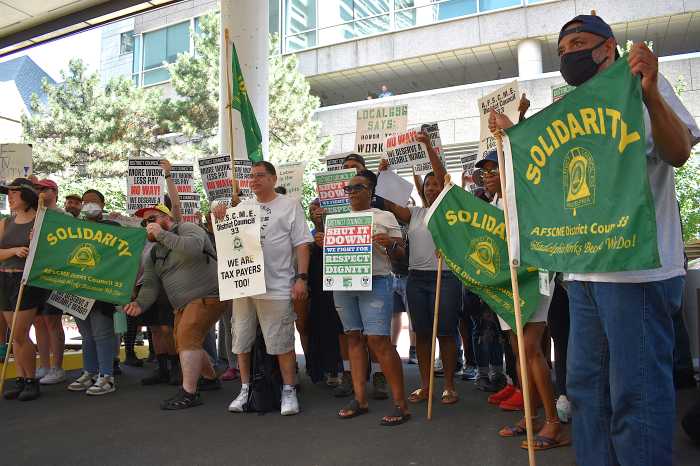Shortly before Kamala Harris replaced Joe Biden as the Democratic Party’s 2024 presidential candidate, several national polls and primary voting results indicated that Donald Trump had peeled away one of the party’s most reliable voting blocs – people of color.
Such was the case with polls suggesting that Trump was expected to win more Black votes than any other GOP candidate in modern history. Other polls suggested that more Hispanic voters were supporting Trump despite his anti-immigration policies and often racist rhetoric.
Each of these apparent political shifts came at a time during the Democratic primaries when President Biden was losing the support of Arab American voters – another reliably Democratic political bloc.
Though the candidacy of Harris has excited Democratic voters across the nation, she is still not immune to the effects of Trump’s appeal to voters of color. An August 2024 Pew Research Center poll found that 77% of all Black voters supported Harris, while 13% supported Trump.
Among Black voters under 50, Harris still led with 68% support – but 19% supported Trump.
In a presidential election that is expected to be close, turning out voters of color is once again crucial to victory in many battleground states, much like the 2020 election that Biden won. Biden won by fewer than 45,000 total votes across Arizona, Georgia and Wisconsin, the three states that put him over the top in the Electoral College.
To win in 2024, Harris and Trump must mobilize communities of color that are already inclined to vote for Harris in large numbers – despite the slight inroads that Trump has made in this often fragile political coalition.
Similarity principle
Since 2020, my research lab at UCLA has conducted five national experiments with Black, Asian, Latino, Middle Eastern and North African voters to study what psychological factors play a role in the voting of individuals from these distinct groups.
We have also explored the factors that undermine these shared perspectives in two additional large-scale studies.
Our evidence suggests that despite their many political and social differences, communities of color tend to vote for candidates who support policies that help remedy racial injustices against all groups, not just their own.
In fact, a close look at several studies involving nearly 3,500 adults from across the U.S. suggests the precise opposite of poll results showing Trump’s gains among voters of color.
Part of the reason is what is known as the similarity principle, the tendency of human beings to like others who are similar to them. Drawing on this principle, our experiments asked participants to read an article that discussed the discrimination that another ethnic group had experienced.
For example, in one study Black adults read about how Latino adults were treated as second-class citizens, which is an experience the Black participants could relate to. In another study, Latino adults read about how Asian Americans were labeled “foreigners,” an experience shared by many Latino Americans.
These shared social experiences also have a political component.
After the various groups read about other groups, we found that Black people become more supportive of policies that benefit Latino voters, such as extending rights for undocumented Latino immigrants. In turn, Latino voters become more supportive of Black Lives Matter, while Asian Americans, Middle Easterners and North Africans supported cuts to the number of border patrol agents and federal spending at the U.S.-Mexico border.
Most importantly, we learned that this solidarity is based on a shared identity as people of color and is independent of whether individuals are ideologically liberal or conservative.
A solid multiracial coalition
This racial solidarity remains firmly intact despite attempts by some politicians to undermine it by stoking the differences within communities of color.
For example, in one experiment we called attention to the issues that can sometimes stoke conflicts between different groups, such as immigration, affirmative action or reparations.
But outweighing those issues were the similar forms of discrimination experienced by each group. Asian and Latino Americans were both treated as “foreigners,” even though many of them trace their family’s U.S. roots a few generations. Both Black and Latino Americans were discriminated against as socially “inferior” groups, despite visible socioeconomic gains among segments of these populations.
Our findings suggest how negative experiences can be converted into a net political gain – a steadfast political coalition.
But in the real world, messages aiming to promote solidarity among these racially distinct voters must do so without triggering political conflicts between them – a divisive tactic that Trump has explicitly used with some success.
In the 2020 election, Trump increased his gains among all groups of minority voters in comparison with 2016, capturing 1 in 4 voters of color nationally. Trump won the votes of nearly 1 in 5 Black men, and roughly one-third of the Asian American and Latino electorate.
But our research shows that solidarity between people of color is deeply rooted. Politicians would be wise to take advantage of that solidarity if they hope to win.
Professor of Political Science and Psychology at the University of California, Los Angeles.


































